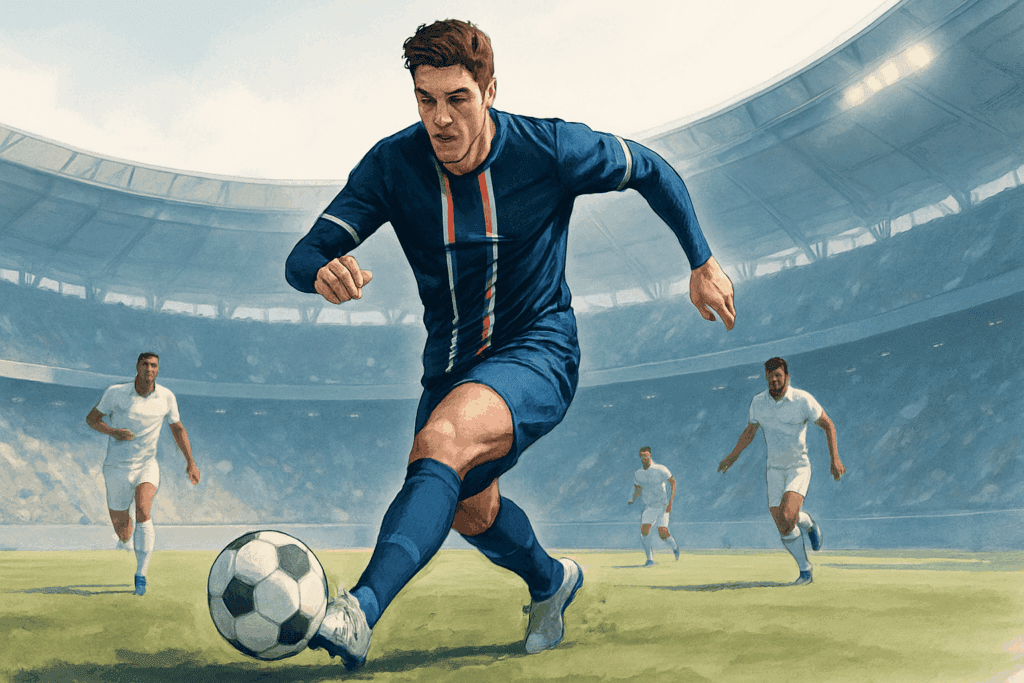Understanding Football Basics
Football, known as soccer in some regions, is a sport that captivates millions around the globe. To truly appreciate the game, one must understand its fundamental aspects. This article aims to provide a comprehensive overview of the essential rules, key positions, and the importance of teamwork in football.
Rules of the Game
The rules of football are governed by the International Football Association Board (IFAB) and are known as the Laws of the Game. Here are some of the most crucial rules:
- The game consists of two teams, each with eleven players.
- A match is played in two halves, each lasting 45 minutes.
- The objective is to score by getting the ball into the opposing team’s net.
- Players cannot use their hands or arms to touch the ball, except for goalkeepers within their penalty area.
- Fouls are called for dangerous or unfair play, leading to free kicks or penalties.
- Offside rules prevent players from gaining an unfair advantage by being nearer to the opponent’s goal line than both the ball and the second-last opponent when the ball is played to them.
Key Positions
In football, each player has a specific role that contributes to the team’s overall strategy. Understanding these positions is essential for grasping the dynamics of the game:
- Goalkeeper: The only player allowed to handle the ball within the penalty area, their primary role is to prevent the opposing team from scoring.
- Defenders: These players protect the goal from attackers, often forming a defensive line to thwart opposing forwards.
- Midfielders: Acting as a link between defense and attack, midfielders control the game’s tempo and facilitate ball movement.
- Forwards: Their main objective is to score goals, and they often play nearest to the opponent’s goal.
Importance of Teamwork
Football is not just about individual skill; it is a team sport that requires coordination and collaboration. Successful teams exhibit strong teamwork, which can be illustrated through the following points:
- Communication: Players must communicate effectively on the field to coordinate their movements and strategies.
- Trust: Team members need to trust each other’s abilities and decisions during the game.
- Strategy: Teams often develop specific strategies that require all players to work together seamlessly.
Paris Saint Germain’s Impact
Paris Saint Germain (PSG) has made a significant mark in the world of football, especially in recent years. This section delves into the club’s history, its star players, and the tactical innovations that have influenced the sport.
History of the Club
Founded in 1970, Paris Saint Germain quickly rose to prominence in French football. The club has a rich history characterized by a passionate fan base and numerous trophies. Key milestones in PSG’s journey include:
- Winning their first major trophy, the Coupe de France, in 1982.
- Securing their first Ligue 1 title in 1986, establishing themselves as a dominant force in French football.
- Experiencing a golden era following the 2011 takeover by Qatar Sports Investments, which led to significant investment in players and facilities.
Star Players
PSG has been home to some of the biggest names in football history. The presence of these star players has not only elevated the club’s status but also influenced global football culture:
- Zlatan Ibrahimović: Known for his incredible skill and personality, he played a crucial role in PSG’s success during his tenure.
- Neymar Jr: One of the most expensive players ever, Neymar’s flair and creativity on the pitch have made him a key figure for the team.
- Kylian Mbappé: A young talent known for his speed and goal-scoring ability, Mbappé is considered one of the future stars of football.
Tactical Innovations
PSG has not only excelled in acquiring top talent but has also been at the forefront of tactical innovations in football. The following strategies have been significant:
- Possession-Based Play: PSG has adopted a style that emphasizes retaining possession to control the game.
- High Pressing: The team has implemented a high-pressing strategy to regain possession quickly and apply pressure on opponents.
- Flexible Formation: The club often experiments with various formations, allowing players to adapt to different situations during matches.
Conclusion
Mastering football involves understanding its fundamentals, recognizing the significance of teamwork, and appreciating the impact of clubs like Paris Saint Germain on the sport. As the game evolves, so too do the strategies and players, making football an ever-fascinating spectacle for fans worldwide.
FAQ
What are the basic rules of football?
The basic rules of football, known as the Laws of the Game, include two teams of eleven players, a match duration of 90 minutes, and the objective of scoring by getting the ball into the opposing net. Players cannot use hands, except for goalkeepers, and fouls can result in free kicks or penalties.
Who are the key players in Paris Saint Germain?
Key players in Paris Saint Germain include Zlatan Ibrahimović, who was crucial in the club’s success, Neymar Jr, known for his creativity, and Kylian Mbappé, a young star recognized for his speed and goal-scoring prowess.
How has PSG changed football tactics?
PSG has influenced football tactics by adopting possession-based play, implementing high-pressing strategies, and experimenting with flexible formations, allowing them to adapt to various match situations effectively.




